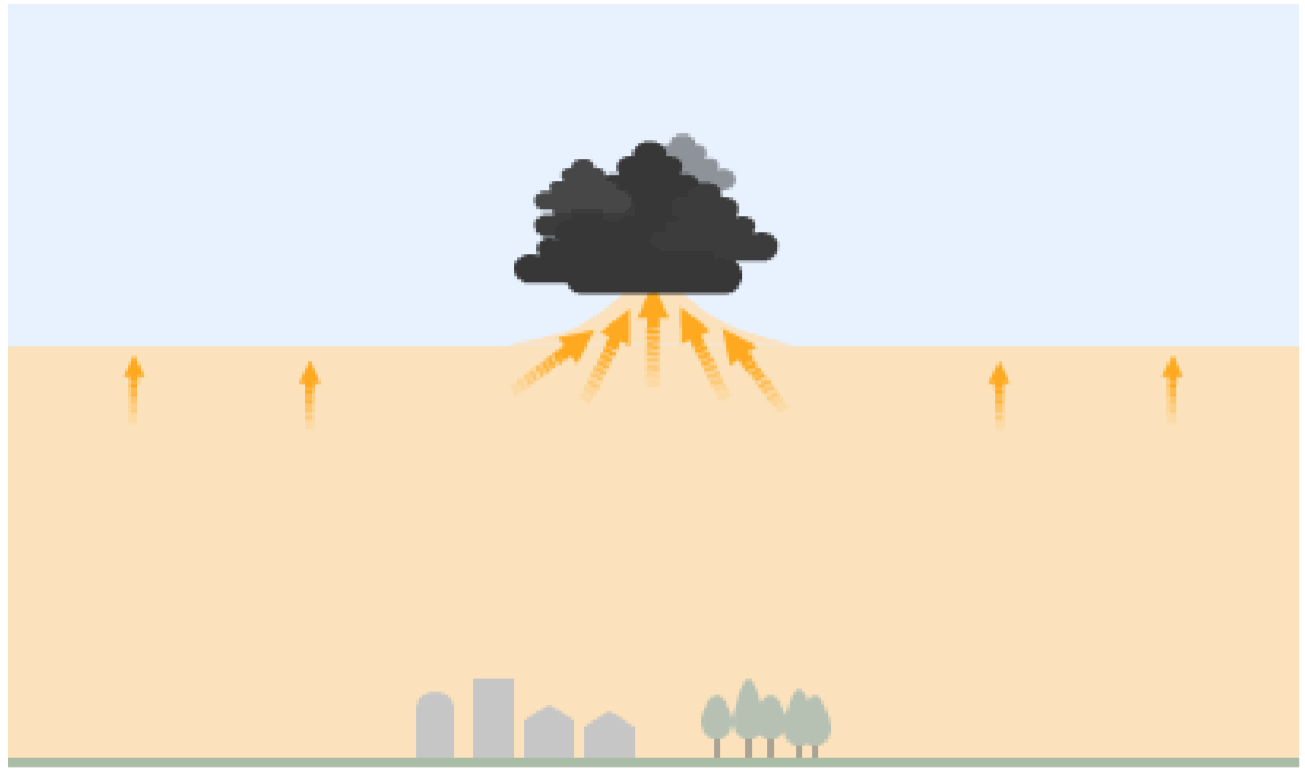Look out! A tornado is about!

Tornadoes are impressive and terrifying. They are very dangerous. The danger of a tornado does not come from the speed they move forward over land, but from the speed the air moves around in a circle which can reach up to 250-300 miles per hour (think about that speed compared to how fast you drive in a car).
Let’s find out more…

How do tornadoes form?
Tornadoes are a tall tunnel of rotating air between a thunderstorm in the sky and the ground below, made from fast circular winds. A tornado can tear up everything in its path and it can sound like a loud freight train coming towards you.
Tornadoes need intensely hot weather to form. In hot weather, warm, humid air rises and hits cold, dry air. When this happens, the warm air explodes upwards and rises through the colder air which causes a draught. Thunder clouds may also begin to form (see picture below).

The draught, travelling upwards, will begin to rotate if winds vary sharply in a particular direction. Winds from different directions cause this rotation. The rotating draught, called a mesocycle, draws in more warm air from below and this increases the speed of its rotation.
Water from the moist air form a funnel cloud. The funnel of rotating air grows and eventually it drops down from the cloud to the ground, becoming a tornado. There can be rain, thunder and lightning too.

Image from: https://www.bbc.co.uk/news/uk-wales-53069614.
Information from the National Geographic post “Tornadoes, explained” and BBC News information sheet “How a tornado is formed”.
Some fun facts:
The United States has a particularly large number of tornadoes per year – about 1,000.
When a circle of rapidly moving air called a twister forms over water it is called a ‘waterspout’. A waterspout can become a tornado if it moves onto land.
Tornadoes can damage areas up to one mile wide and 50 miles long (ask a parent how far that is for a good comparison).
It can be hard to see a tornado because it can look transparent. It becomes visible when it picks up dust, dirt and debris or if a cloud forms within the tornado.
In the US there is a region called Tornado Alley. This region is prone to tornadoes because dry polar air from Canada meets warm, moist tropical air from the Gulf of Mexico (look on a map to spot these places).
If you want to find out more, you can watch some videos here:
Ryan creates Tornado in the bottle science experiments for Kids!!!